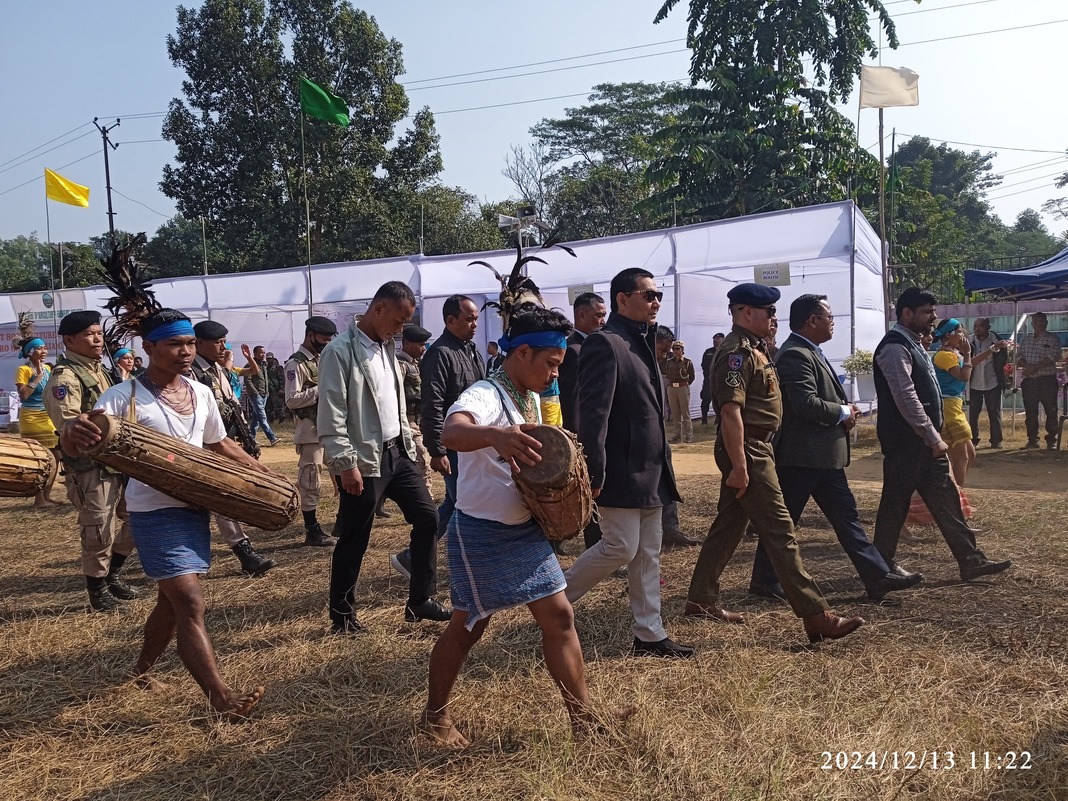Guwahati, Dec 13: In a landmark move to address climate change vulnerabilities, the Indian Institute of Technology (IIT) Guwahati, in collaboration with IIT Mandi and the Centre for Study of Science, Technology, and Policy (CSTEP), Bengaluru, has released a critical report titled “District-Level Climate Risk Assessment for India: Mapping Flood and Drought Risks Using IPCC Framework.” The report, unveiled on December 13, 2024, highlights Assam’s dual risk from both floods and droughts, underscoring the urgent need for localized adaptation strategies.
The report’s release was marked by the presence of notable dignitaries, including. Anita Gupta, Head of Scientific Divisions at the Department of Science and Technology (DST), India; Mr Pierre-Yves Pitteloud, Senior Regional Advisor for Disaster Risk Reduction (DRR) and Climate Change Adaptation (CCA) at the Swiss Agency for Development and Cooperation (SDC); and senior researchers from IISc Bangalore, IIT Guwahati, IIT Mandi, and CSTEP.
Dr Anita Gupta emphasized the importance of a unified approach, stating, “Climate change is one of the most formidable challenges of our time, impacting agriculture, livelihoods, and every aspect of life. No single entity can address this alone—it requires collective efforts and innovative frameworks.” She further stressed the need for translating the report’s findings into actionable measures at the national and state levels to achieve India’s goal of a climate-resilient future.
Key Findings of the Report
Flood Risk : The report identifies 51 districts in India as having “Very High” flood risk, with an additional 118 districts at “High” risk. Assam is among the states most affected, alongside Bihar, Uttar Pradesh, West Bengal, Gujarat, Odisha, and Jammu and Kashmir.
Drought Risk : Ninety-one districts in India face “Very High” drought risk, while 188 districts are classified as “High” risk. Assam, Bihar, Jharkhand, Odisha, and Maharashtra are among the most affected states.
Dual Risk Areas : Alarmingly, 11 districts, including Patna (Bihar), Alappuzha (Kerala), and Kendrapara (Odisha), face “Very High” risk from both floods and droughts, requiring urgent intervention.
Prof. Devendra Jalihal, Director of IIT Guwahati, commented, “India’s agrarian society is deeply dependent on the monsoon, making the challenges posed by climate change, such as droughts and excessive rainfall, increasingly critical. This report… offers invaluable insights for effective mitigation strategies.”
Dr. Indu K. Murthy of CSTEP highlighted, “At the district level, climate risk mapping is essential for prioritizing locations for adaptation interventions. With increasing extreme events and regions now facing both droughts and floods, it is a crucial first step towards disaster preparedness and resource allocation.”
The report’s methodology follows the Intergovernmental Panel on Climate Change (IPCC) framework, assessing risk based on climatic hazards, exposure, and vulnerability. It aligns with India’s 10-point agenda for disaster risk reduction and directly supports the country’s vision for a “Viksit Bharat” and “Net Zero Bharat” by 2047.
The report has called for developing and iimplementingdistrict-level adaptation strategies that address the unique risks of floods and droughts. It laid stress on capacity building to train local authorities, state climate change cells, and allied departments to integrate risk assessments into planning and resource allocation.
The report said there needs to be climate-resilient Infrastructure and authorities should invest in infrastructure that can withstand both flood and drought conditions, including water storage systems, flood barriers, and sustainable irrigation systems.
Next Steps and Way Forward
Dr Anamika Barua, a researcher from IIT Guwahati, emphasized the participatory nature of the report, stating, “Engaging state stakeholders not only built their capacity but also made the process highly inclusive, going beyond a purely academic eendeavour Such projects enhance science communication, fostering better adaptation planning.”
The report underscores the need for an ongoing review of climate risk assessments and continuous updates to SAPCCs. It also calls for incorporating emerging risks such as heat stress and landslides into adaptation planning. Researchers advocate for a multi-scale, sector-specific approach that integrates disaster risk reduction with broader development goals.
Dr Susheela Negi, Scientist-F at DST, aptly put it, “This report paves the way for data-driven adaptation planning, offering a roadmap for targeted interventions in regions most at risk. We must act now to mitigate the dual threats of floods and droughts that endanger lives, livelihoods, and the economy”




